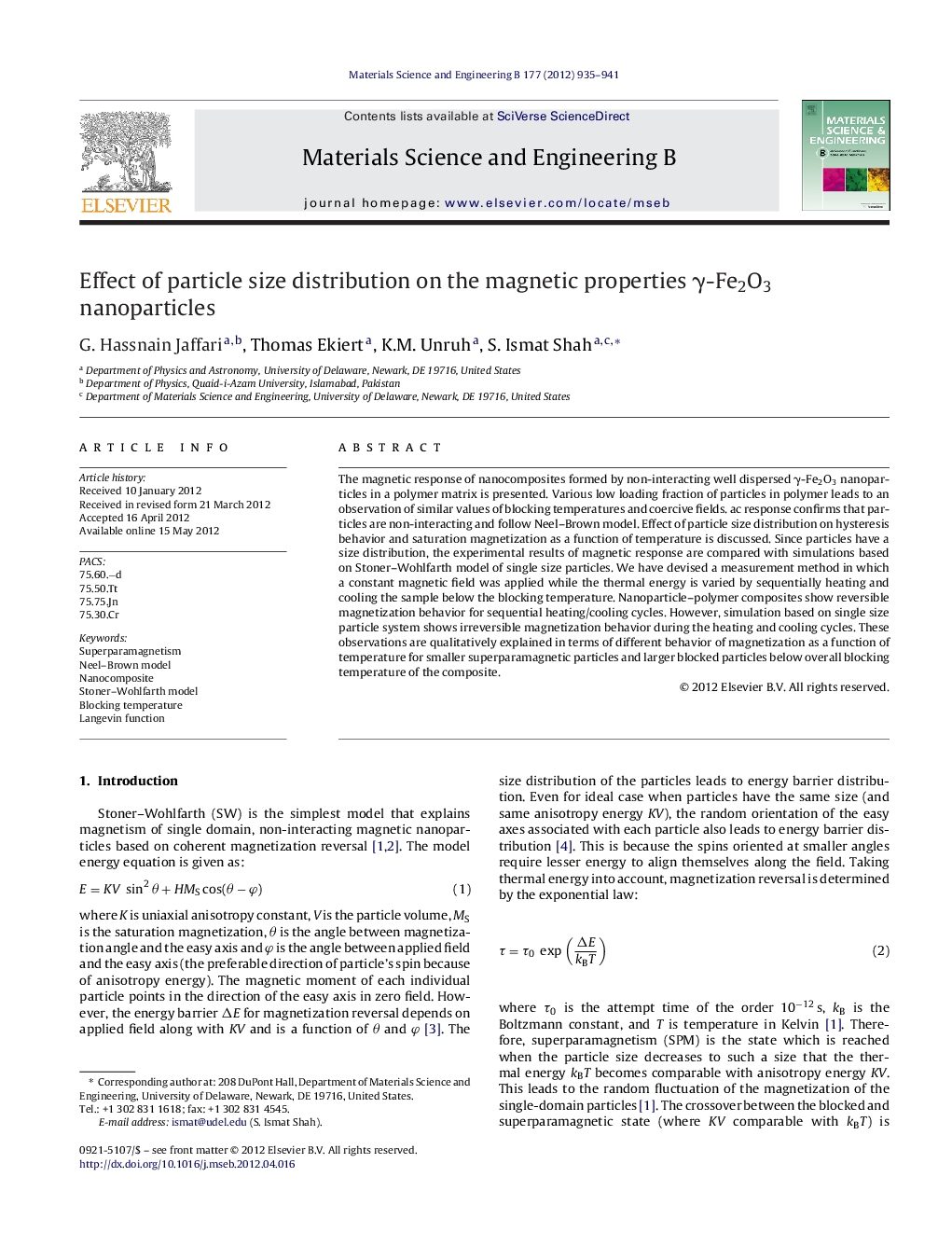| کد مقاله | کد نشریه | سال انتشار | مقاله انگلیسی | نسخه تمام متن |
|---|---|---|---|---|
| 1529371 | 995751 | 2012 | 7 صفحه PDF | دانلود رایگان |

The magnetic response of nanocomposites formed by non-interacting well dispersed γ-Fe2O3 nanoparticles in a polymer matrix is presented. Various low loading fraction of particles in polymer leads to an observation of similar values of blocking temperatures and coercive fields. ac response confirms that particles are non-interacting and follow Neel–Brown model. Effect of particle size distribution on hysteresis behavior and saturation magnetization as a function of temperature is discussed. Since particles have a size distribution, the experimental results of magnetic response are compared with simulations based on Stoner–Wohlfarth model of single size particles. We have devised a measurement method in which a constant magnetic field was applied while the thermal energy is varied by sequentially heating and cooling the sample below the blocking temperature. Nanoparticle–polymer composites show reversible magnetization behavior for sequential heating/cooling cycles. However, simulation based on single size particle system shows irreversible magnetization behavior during the heating and cooling cycles. These observations are qualitatively explained in terms of different behavior of magnetization as a function of temperature for smaller superparamagnetic particles and larger blocked particles below overall blocking temperature of the composite.
► Effects of particle size distribution on magnetic properties of γ-Fe2O3 nanoparticles are studied.
► A new measurement is carried out in which spins were thermally activated below blocking temperature under constant field.
► Simulations on non-interacting nanoparticle system are compared with experiment.
► The magnetization differences at the temperature below and around blocking temperature are discussed.
► Experimental results show reversible magnetization on subsequent cooling–heating cycles.
Journal: Materials Science and Engineering: B - Volume 177, Issue 12, 25 July 2012, Pages 935–941